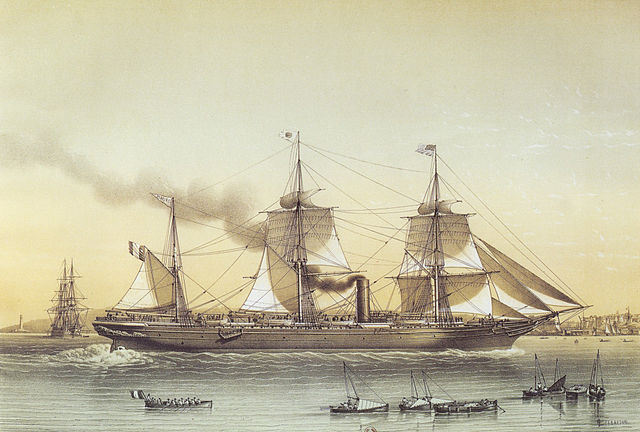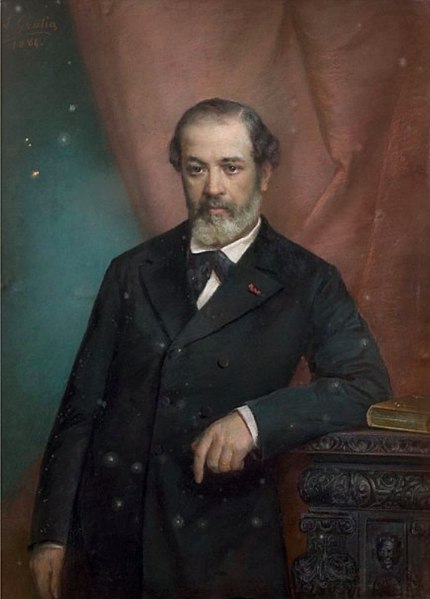The Compagnie des chemins de fer du Midi, also known in English as the Midi or Southern Railway, was an early French railway company which operated a network of routes in the southwest of the country, chiefly in the area between its main line – which ran from Bordeaux, close to the Atlantic coast, to Sète on the Mediterranean – and the Pyrenees.
Inauguration of the Bordeaux-Sète line on April 2, 1857 at Toulouse-Matabiau station.
Participation certificate of the Compagnie des Chemins de Fer du Midi, issued 4. July 1927
Compagnie des chemins de fer du Midi power station near Artouste
The prototype 1′C1′ locomotive, E 3101
Émile Pereire and his brother Isaac Pereire were major figures in the development of France's finance and infrastructure during the Second French Empire. The Pereire brothers challenged the dominance of the Rothschilds in continental European finance, known at the time as haute finance. Their attempt was temporarily successful, and even though it collapsed in the late 1860s, it contributed to a more developed and vibrant economic landscape. Like the Rothschilds, the Pereires were Jews, but unlike them, they were Sephardi of Portuguese origin.
Isaac and Émile Pereire
Steamer Pereire-Lebreton of the Pereire's Compagnie Générale Transatlantique
Eugène Pereire by artist Charles Louis Gratia, founder of the Banque Transatlantique
Villa Philipson in Pistoia, Italy, built by Edoardo Philipson and Sophie Rodrigues Pereire, parents of Dino Philipson








